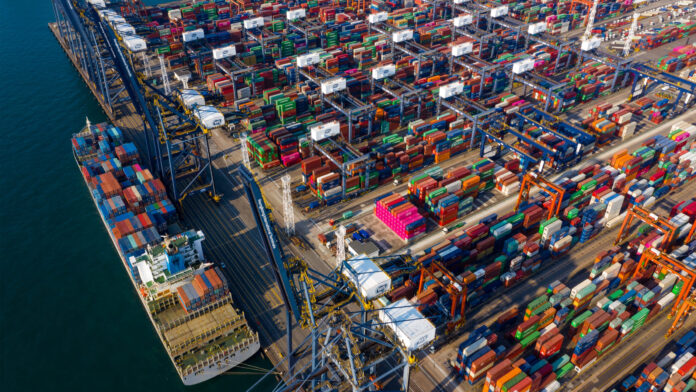Strategic Shifts and Emerging Challenges in a Post-Crisis Economy
In 2024, Sri Lanka’s trade landscape began to pivot after years of turbulence marked by economic instability, currency depreciation, and stringent import restrictions. The year witnessed not only a measurable recovery in trade volumes but also signaled a critical inflection point in the country’s integration into the global trading system. The Central Bank of Sri Lanka’s Annual Economic Review 2024 reveals a layered and nuanced picture, of progress, structural gaps, and untapped strategic opportunity.
Merchandise imports rose to USD 18.8 billion in 2024, reflecting a 12.1 percent year-on-year increase. This upsurge was driven by the gradual relaxation of import restrictions, particularly between mid-2023 and early 2025. Consumer confidence showed signs of recovery as demand rebounded for essential items, home appliances, and even telecommunications equipment. Intermediate goods, crucial for export-oriented industries such as apparel, also saw a surge, affirming the resilience of key manufacturing sectors. However, while this growth marked a recovery, it still trailed behind the pre-pandemic average of USD 20.3 billion—indicating that structural economic scars from the crisis period remain partially unhealed.
What stands out is the strategic sequencing of import liberalization. The phased relaxation of vehicle imports in three stages, buses and special vehicles, goods transport vehicles, and finally passenger vehicles, reflects a deliberate approach to macroeconomic stabilization. While politically sensitive, such policy staging helped avoid import-led inflation surges and pressure on foreign reserves.
More importantly, the composition of imports is beginning to shift. While fuel imports declined due to lower global prices and increased hydropower use, the spike in investment goods points toward a medium-term economic recalibration. The demand for machinery, construction material, and engineering equipment suggests that businesses are beginning to re-invest, potentially laying the groundwork for a new cycle of capital formation.
On the export side, despite some contraction in price indices, especially for industrial products, Sri Lanka benefited from an improvement in terms of trade, with the index rising to 86.7 in 2024. Although still below the base year of 2010, the improvement over 2023 indicates better relative returns per unit of imports. Nevertheless, export prices remain under pressure, which could affect margins in key sectors unless innovation, branding, and vertical integration are strengthened.

Sri Lanka’s direction of trade also reflects deeper changes. India, China, and the USA continued to dominate, accounting for 40 percent of total trade. Trade with India was buoyed by essential imports like petroleum and rice, while the trade surplus with the USA was anchored by strong apparel exports. However, the widening trade deficit with China, from USD 2.8 billion to USD 4.1 billion, warrants closer strategic scrutiny. Imports from China, largely in capital goods and construction inputs, surged, while exports remained low, underscoring the need for a calibrated export push targeting Chinese consumer markets and leveraging e-commerce platforms.
Strategically, the signing of the Sri Lanka-Thailand FTA in February 2024 marks a turning point. As Sri Lanka’s fourth bilateral trade agreement, it covers not only goods but also services, investments, customs cooperation, and IP rights. Its implementation in January 2025 offers an important testing ground for the country’s institutional readiness to handle complex trade frameworks. Meanwhile, negotiations on other preferential trade agreements with India (ETCA), Bangladesh, and Indonesia suggest a pivot toward regional economic corridors.
However, performance under older trade agreements such as ISFTA and PSFTA remained muted, and the slow progress in finalizing the China-Sri Lanka FTA is a missed opportunity. The EU’s extension of the GSP+ scheme until 2027 offers some cushion, but new compliance burdens, such as the EU Deforestation Regulation (EUDR) impacting Sri Lankan rubber exports, reveal the tightening of global standards. Failure to adapt could lead to market losses, even within existing preferential frameworks.
The real test for Sri Lanka will be aligning trade strategy with domestic production capabilities and sustainability goals. The rise in non-preferential exports in 2024 is both a sign of diversification and a warning, indicating that the country’s competitive advantage is increasingly outside traditional trade preferences. This can be an asset if leveraged wisely, or a risk if it masks underlying inefficiencies.
In the years ahead, Sri Lanka must do more than negotiate trade deals or ease import bans. The country needs a clear, cohesive trade policy that aligns industrial upgrading, export diversification, sustainability compliance, and regional integration. Institutions must also be strengthened to monitor trade-related regulatory changes, ensure private sector readiness, and promote innovation-driven competitiveness.
The signs of recovery are real, but the momentum must now be directed toward long-term resilience.




